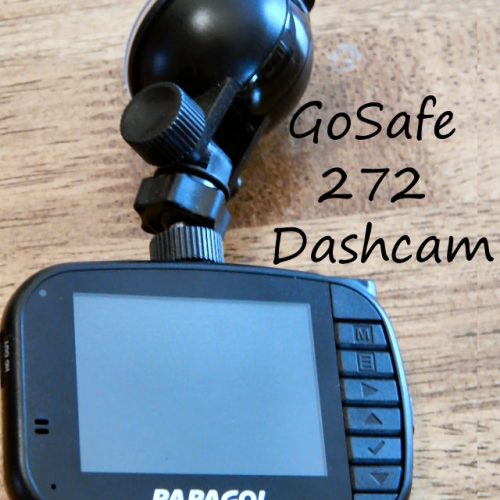Riding a motorcycle is an exhilarating experience, but it comes with its risks. Among the most critical safety measures is wearing a proper motorcycle helmet. Choosing the right helmet can significantly impact your safety and comfort on the road. In this paper, we’ll delve into the essential factors to consider when selecting the best motorcycle helmet to suit your needs.
Understanding Helmet Safety Standards
Before diving into the specifics of helmet types and features, it’s crucial to understand the various safety standards. Organizations like the Department of Transportation (DOT) and the Snell Foundation set standards for motorcycle helmet safety.
The Department of Transportation will conduct tests on helmets to make sure they meet their Federal Motor Vehicle Safety Standard (FMVSS) No. 218). This includes the weight of the helmet, the thickness of the inner liner, and the sturdiness of the chin straps and rivets. Helmets that pass these tests will have a DOT certification label on the outside back.
The Snell Foundation is a non-profit organization dedicated to research, education, testing, and development of helmet safety standards. They are recognized in the U.S. and worldwide by many racing organizations including the American Motorcycle Association. They have a list of helmets that have been tested and met safety standards. Each helmet will have a Snell label next to the DOT label and helmet model name on the outside and/or a Snell label under the comfort padding.
It’s a good practice to look for helmets that meet multiple requirements. Unfortunately, there are ways people will create counterfeit DOT labels. When searching for helmets, looking for ones that not only have a DOT label but also a Snell Foundation label gives you a higher chance of an authentic safety-compliant helmet.
Helmet Types and Styles
Motorcycle helmets come in various types and styles, each offering unique features and levels of protection.
- Full-face helmets: provide the most coverage, protecting the entire head and face.
- Modular helmets: offer versatility by allowing the chin bar to flip up, while open-face and half helmets provide less coverage but offer a more open riding experience.
- Off-road and dual-sport helmets: designed for use in dirt biking and adventure riding.
- Half and open-face helmets: The protection provided by these helmets are significantly reduced.
Understanding the pros and cons of each type will help you choose the helmet style that best suits your riding needs and preferences.
Proper Fit and Sizing
No matter how advanced or stylish a helmet may be, it’s ineffective if it doesn’t fit properly. A snug and secure fit is essential for maximizing protection in the event of a crash. Helmets come in three different shapes to fit everyone’s heads. This includes:
- Round oval
- Intermediate oval – which is the most common
- Long oval
Keep in mind, that this is about the shape of your head (skull), not the shape of your face. To ensure a proper fit, measure your head size and shape with a cloth measuring tape. Start at just above your eyebrows and circle it around the thickest part of the back of your head. Then look at the helmet size chart based on these measurements.
Try on helmets in various sizes and brands, making sure they sit comfortably snug on your head without causing pressure points. Pay attention to how the helmet sits on your brow, cheeks, and the back of your head.
Adjust the helmet’s retention system to achieve a secure fit, and test for movement by shaking your head from side to side and up and down. A correctly sized helmet will not move when you shake your head whereas an incorrectly sized helmet will move around or not sit down all the way on your head.
Helmet Materials and Construction
An Albuquerque motorcycle accident lawyer from Caruso Law Offices, P.C. relayed that the materials used in a helmet’s construction play a significant role in its safety, weight, and durability. Common helmet materials include polycarbonate, fiberglass, and carbon fiber, each offering different levels of strength and impact absorption. In addition to the outer shell, helmets feature an inner EPS liner that absorbs impact energy during a crash. Understanding the materials and construction techniques used in helmets will help you make an informed decision based on your safety priorities and budget.
Ventilation and Comfort Features
Riding for extended periods can be uncomfortable without proper ventilation. Ventilation systems in helmets help regulate airflow, keeping you cool and reducing fogging on the visor. Look for helmets with adjustable vents that allow you to customize airflow based on weather conditions. Additionally, consider comfort features such as plush padding, moisture-wicking liners, and removable cheek pads, which enhance overall comfort during long rides.
Visors and Eye Protection
Clear visibility is crucial for safe riding, which is why helmets come equipped with visors or face shields. Visors protect your eyes from wind, debris, and UV rays, while also improving aerodynamics and reducing fatigue. Choose a helmet with a high-quality visor that offers distortion-free vision and easy adjustment. Some helmets feature built-in sun shields or offer compatibility with aftermarket tinted or photochromic visors for added convenience.
Additional Considerations
In addition to the primary features mentioned above, several other factors warrant consideration when choosing a motorcycle helmet. These include helmet weight, noise reduction features, compatibility with communication systems, and ease of maintenance. While these factors may seem minor, they can significantly impact your comfort and convenience on the road.
Budget Considerations
When shopping for a motorcycle helmet, it’s essential to strike a balance between budget constraints and safety. Helmets are available at various price points, ranging from budget-friendly options to high-end models with advanced features. While it’s tempting to opt for the cheapest helmet available, investing in a quality helmet is an investment in your safety. Consider the cost as a long-term investment in your well-being rather than a short-term expense.
Your Helmet Matters
Choosing the best motorcycle helmet requires careful consideration of various factors, including safety standards, helmet types, fit and sizing, materials and construction, ventilation and comfort features, visors and eye protection, additional considerations, and budget constraints. Prioritize your safety and comfort, when selecting a helmet within your budget. Remember, the best helmet is one that fits properly, meets safety standards, and aligns with your individual riding needs and preferences.
We are not lawyers and this is in no way intended to be used as legal advice . We cannot be held responsible for your results. Always do your own research and seek professional legal help.






